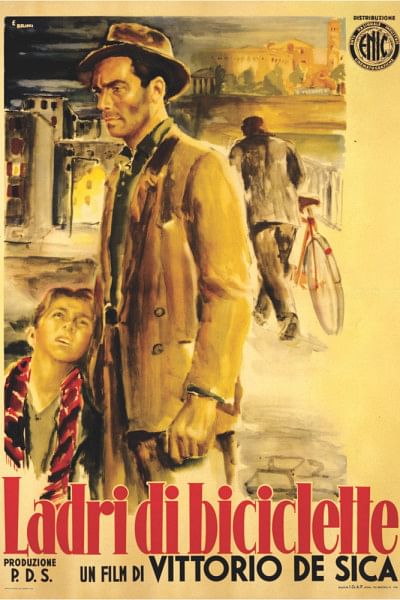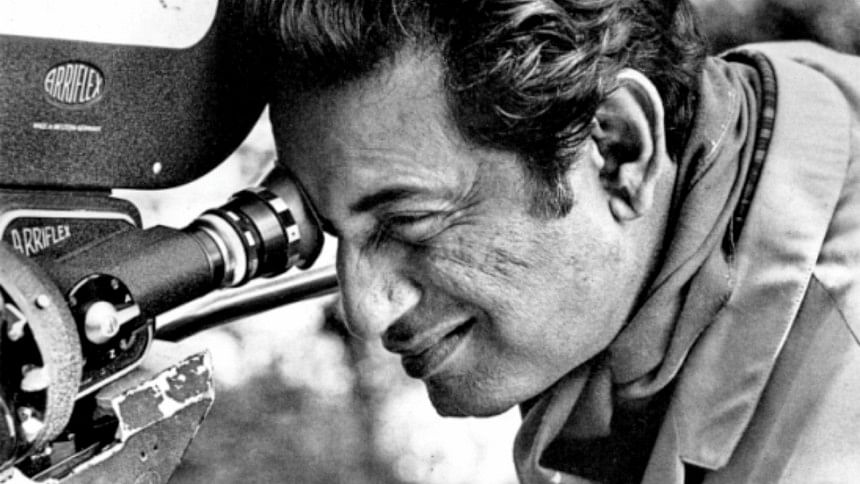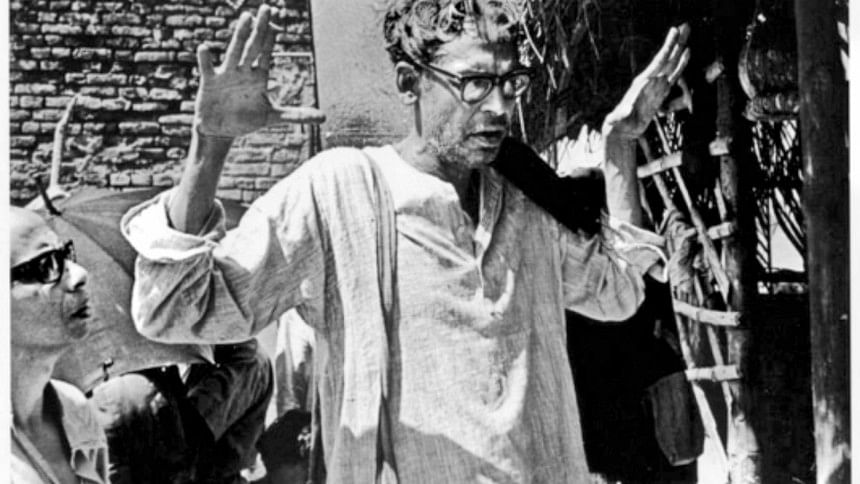Beginning of Reality

It was the end of the Second World War. Bennito Mussolini's government collapsed in 1943 and with it fell down the glorious Italian film industry. What was once called the city of cinema, with its lavish set designs, conservative values, and respect for authority came to its end. This crisis however gave birth to a new film movement named 'Neo Realism'. It was set amongst the poor and the working class, was filmed on location rather than film sets and frequently used non professional actors.
The aim was to portray the post-war Italian psyche and conditions of everyday life including poverty, oppression, injustice, and desperation. One of the front liners of this movement was Vittorio De Sica. Born in poverty, this Italian filmmaker and actor decided to tell the tales of reality. After his controversial film Shoeshine, De Sica wanted to, as he once said, "Uncover the drama of everyday life." This resulted in the making of the film 'The Bicycle Thieves'— credited as the best work of Italian neo realism.
Now at this point one might ask why we are talking about a film which was made a long time ago and had nothing in common with our reality. The fact is Bicycle Thieves was an inspiration to a lot of film makers. It showed a new treatment of cinema. Two very popular Bengali film makers were also inspired by this film. The shape that was given to Bengali cinema by both Satyajit Ray and Ritwik Ghatak were very much inspired by the realistic approach of The Bicycle Thieves.

Ray and Ghatak both encountered this film in different situations. Nonetheless it affected both of them quite the same way. The approach of showing reality rather than a dream world, which the then cinemas projected, was very intriguing to them.
Ghatak who always worked for the people, joined the Indian People's Theatre Association (IPTA) to tell the tales of everyday struggles of Bengali men and women through playwright. The stage was his first encounter with the art world. His engagement with IPTA was not only just as a playwright, actor and director but also as a cultural theorist. We are talking about a person who never accepted the partition of India which divided Bengal into two countries. Almost every one of his films dealt with this crisis. He came into film making not for the sake of the art of films but to make a statement. In his opinion it was the best platform for expressing his anger at the sorrows and sufferings of his people. Now, his encounter with Bicycle Thieves was quite skeptical at first. Ghatak, who was a Marxist, thought the film was a practice of foreign intellectual propaganda. After he saw the film, he immediately changed his mind and grabbed the pen. In his article he quoted the film as a 'per diem poem'. The film's way of staying true to the society mesmerised him as it portrayed the kind of films he himself wanted to make. He thought the film brought out anger at the oppression rather then sorrow.
Now let's come to Satyajit Ray. A person who was in love with the art of cinema makes his debut with Pather Panchali— an adaptation Bibhutibhushan Bandyapaddhay's famous novel. His encounter with the Italian film happened in London. Working in an advertisement agency, Ray was sent to London at the head office. There the first film he watched was Bicycle Thieves. In his memoir Apur Panchali, he said after watching the cinema he finally came to the decision to make Pather Panchali. Like the Italian film, Ray decided to work with non stars and bring up ordinary actors who can portray reality as it is. Pather Panchali also came out of the practice of film studios and was shot in real locations. Needless to say, the film beautifully portrayed the ups and downs of a rural Bengali family.

The inspiration of Bicycle Thieves was not just bestowed upon Ray and Ghatak. Bimal Ray's 'Do Bigha Jamin', which was the first neo-realistic cinema of the Indian sub continent, also portrays the influence of the De Sica's film. Famous Bangladeshi film maker Zahir Raihan is also said to be influenced by De Sica's neo realism approach. Now the question rises as to why a film made thousands of miles away affected our directors. To understand this, we have to look at the film itself. The story of Bicycle Thieves was a very simple one— a father (Antonio) and son (Bruno) duo searching for their stolen bicycle. Yet this film portrayed the struggle of poverty which the people of Italy came across after the war. The film portrayed some harsh realities of life through a very simple tale— which was just what Bengal needed to pen their version of reality. The Apu Trilogy was just a three part tale of a boy growing up, but it portrayed every crisis the Bengalis faced at that time through the story. As we see, this movement had changed the mere conception of cinema. What was once just a medium of entertainment became a platform to showcase the state of reality.
History marks this period as the golden age of Italian cinema. However, this also began the golden age of Bengali cinema. The practice which Ghatak and Ray started can be credited as the best form of cinema. For this practice the world finally saw the birth of reality on-screen.
Photos: internet

 For all latest news, follow The Daily Star's Google News channel.
For all latest news, follow The Daily Star's Google News channel. 



Comments